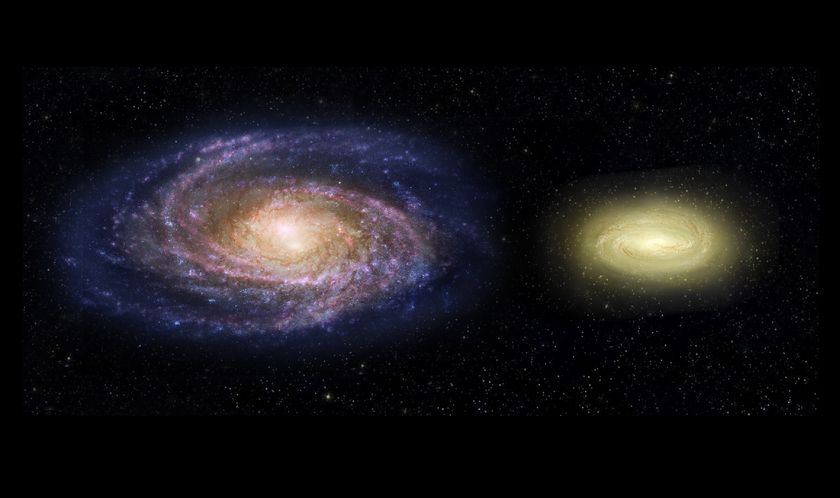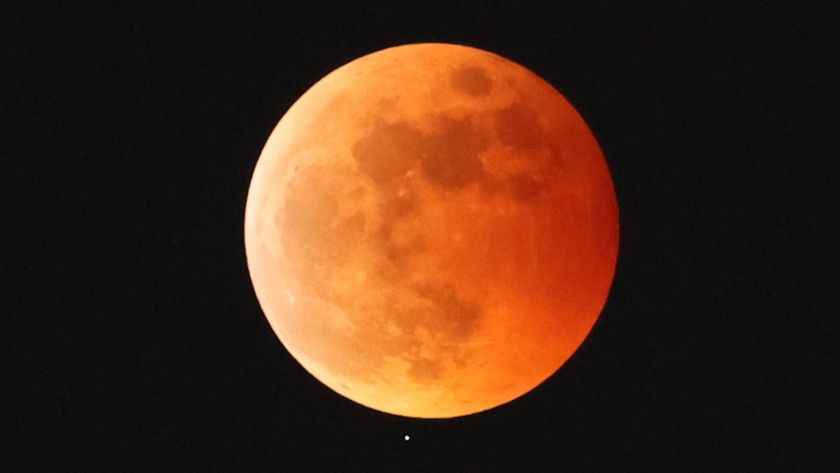How Stars Die: Lopsided Nature of Supernovas Revealed
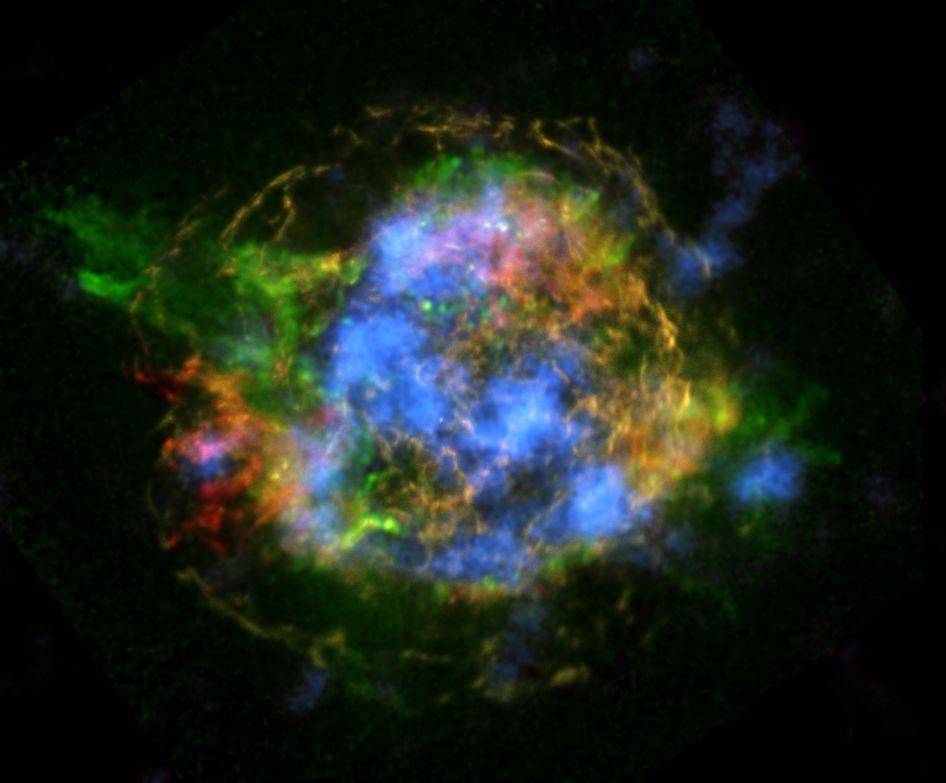
The devastating, explosive deaths of stars appear to be lopsided cosmic conflagrations, scientists say.
The new findings, based on data collected by NASA's X-ray mapping NuSTAR space telescope, may be a clue into what exactly happens in the hearts of stars as they explode as supernovas, the researchers added.
Elements from carbon on upward that make up stars, planets and people are synthesized within massive stars. These elements are spread throughout the universe by the explosions that end the lives of these stars, supernovas that are bright enough to momentarily outshine their entire galaxies. [Supernova Photos: The Explosive Deaths of Stars]
Stars that are born with more than about eight times the sun's mass end their lives as so-called core-collapse supernovas. When the core of such a massive star runs out of fuel, it collapses to an extraordinarily dense nugget in a fraction of a second. Further material falling onto this collapsed core can bounce off it, causing a violent shock wave that blasts matter outward.
For decades "our best model of supernova explosions forced the stars to collapse symmetrically," said study lead author Brian Grefenstette, an astrophysicist at the California Institute of Technology in Pasadena. "Stars are big spherical balls of gas, so it made sense that they should collapse in some kind of spherical way."
"The problem is that when you try to make a star explode by forcing it to collapse symmetrically, the star doesn't explode," Grefenstette told Space.com. "You get a dud."
This failure apparently happens in symmetrical models because that shock wave that starts at the center of the star and is supposed to destroy it gets trapped by all of the material above it. This mean the shock wave "can't find a way out," Grefenstette said.
Sign up for the Live Science daily newsletter now
Get the world’s most fascinating discoveries delivered straight to your inbox.
As such, astrophysicists have explored ways to put ripples in the material of a dying star they call asymmetries "that can let the shock wave out and rip apart the star," Grefenstette said. However, it was uncertain how exactly core-collapse supernovas should look — the predicted shape could differ significantly depending on which models one used of the explosions.
Now scientists have confirmed that supernovas can be asymmetric by looking at the nearby remnants of such an explosion.
"Our results are really the first step in being able to see what was going on in the center of the star," Grefenstette said.
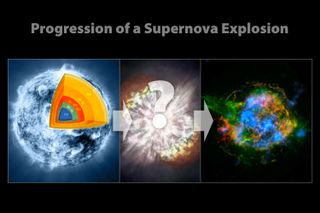
Researchers investigated Cassiopeia A, a remnant about 11,000 light-years away of a supernova that happened about 350 years ago. They focused on the distribution of the radioactive titanium isotope Ti-44, which is produced deep in the cores of stars.
The supernova tossed out titanium-44 just like a bomb would scatter debris.
"We're like forensic scientists studying the radioactive ash that the explosion left behind to try to understand what happened during the explosion," Grefenstette said.
Since titanium-44 is radioactive, "it glows in a very specific color of light," Grefenstette said — high-energy X-rays. The researchers looked at this glowing matter using the NuSTAR space telescope (short for Nuclear Spectroscopic Telescope Array), which is "the first telescope that makes detailed images in this color of light, which lets us unlock a lot of the information that was hidden to us before," Grefenstette said.
These images revealed the radioactive isotope was spread around in an uneven manner. This revealed the explosion was more asymmetrical than could be produced by a spherical explosion, although it was not completely lopsided in nature.
"What our results are pointing toward is the idea that the explosion happens because the core of the star sloshes around a bit during the collapse," Grefenstette said. "In this case, we think that what happens is like when you boil water on a stove top, where bubbles are made near the bottom of the pot and rise up, making the surface of the water slosh around and letting some steam escape."
"In the supernova, the heat, instead of coming from the burner on your stove, is coming from small particles called neutrinos, which are produced in the intense pressure at the center of the explosion," Grefenstette said. "These neutrinos heat the material in the center of the collapse and make large bubbles of hot gas that rise up through the material and cause the core of the star to slosh around a bit.
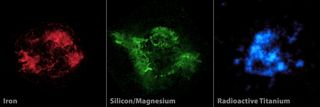
This sloshing "lets the shock wave escape the material that's holding it back, and once this happens, it's kind of like if you punched a hole in the top of a pressure cooker and the whole thing explodes," Grefenstette said.
The scientists detailed their findings in the Feb. 20 issue of the journal Nature.
Follow us @Spacedotcom, Facebook and Google+. Original article on Space.com.

Most Popular



